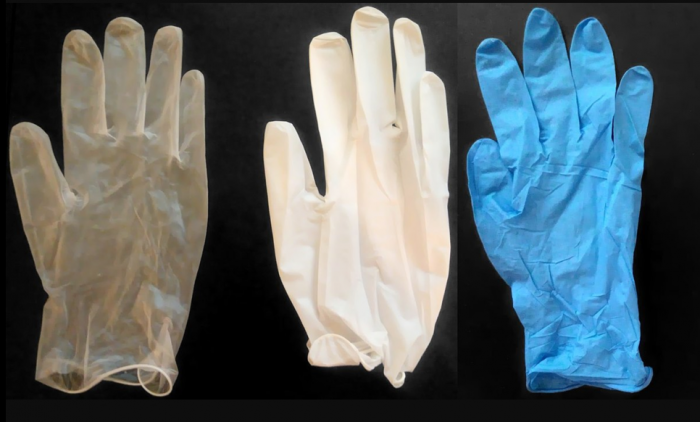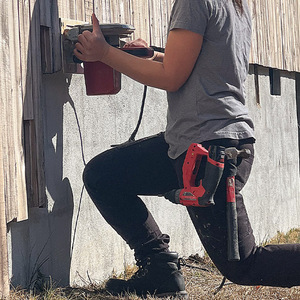Choosing Disposable Gloves
The choice depends on what you're handling and how much you're willing to spend.

Disposable gloves are good at keeping a variety of oily, sticky and potentially hazardous gunk off your hands. They’re readily available in just about any hardware, auto parts, or big box store, and they cost as little as 25 cents a pair when you buy them in bulk from an industrial supply house.
The question is what kind should you buy? Although online suppliers list dozens of varieties of protective gloves in their catalogs, the three most common materials for disposables are vinyl, latex, and nitrile. Choosing one over the other boils down to the specific chemical or material you’re going to be handling, how thick the glove should be, and how much the gloves cost.
Thicker gloves offer more protection
Thickness typically ranges from 4 to 15 mils (a mil is one-thousandth of an inch), according to a tutorial posted at the website of Superior Glove, a large Canadian manufacturer. For reference, a plastic supermarket bag is about 3 mils thick.
Thinner gloves don’t necessarily have lower tensile strength, but a thicker glove does buy you some extra protection and should prove more durable. Robert N. Phalen, an associate professor and program chair of the Occupational Safety and Health Program at the University of Houston Clear Lake, says the difference between a 5-mil and a 6-mil glove is insignificant.
Doubling the thickness of the glove does make a difference, but the tradeoff is less dexterity and possibly less comfort. You won’t be as nimble in a really thick glove, a consideration when the job involves handling, say, small machine parts.
Know what you’re handling
Industrial hygienists like Phalen use factors like “breakthrough time” and “permeation rate” to assess the effectiveness of gloves. These values aren’t going to be of much use to a builder standing in The Home Depot and wondering what kind of glove he needs for mixing up a batch of epoxy, or handling a solvent containing ketone.
A place to start is with a chemical compatability guide. Phalen suggests the Cole Parmer Chemical Resistance Guide, for example, an interactive website that allows users to plug in the chemical they’ll be handling to see how common glove materials will react. The guide lists a variety of brands and types.
Industrial suppliers also offer guidance on what type of glove to choose. Uline, for example, has a simple chart that lists common glove materials and the materials they’re best suited for. The recommendations are very general, but a good start. More detailed guides, like the ChemRest database, allows searches by a specific chemical. Kimberly-Clark also has a simple online guide for gauging the effectiveness of its nitrile gloves.
How do you know what you’re getting into? Check the product label for a list of what’s in the stuff you’re using. If you want a more in-depth look check the Safety Data Sheet, which is available online.
Keep in mind, Phalen adds, that disposable gloves are fine when contact with a chemical is going to be incidental. You’re better off switching to a thicker, chemical-resistant glove when contact will be for an extended period of time.
Choose the material
Last but not least is the material the glove is made from. The three most common types for disposable gloves are vinyl, latex and nitrile.
Of the three, vinyl gloves are the least durable and best suited for short-term use. They’re good for water, detergents, and alcohols, Uline says, but don’t count on them for extended wear, and they’re not for handling more potent chemicals such as organic solvents.
Latex is a natural material with good tear resistance. There are two potential problems with latex, according to Superior Glove. One is that some people are allergic to latex and will break out in hives and show other allergic reactions when exposed to it (some 3 million Americans share this problem). Another is that 40% of the world’s supply of latex comes from Thailand, which makes the material somewhat susceptible to environmental factors such as flooding.
Nitrile is a man-made polymer, so it doesn’t have the allergy problem that latex does. It also has good tear resistance, and is suited to a variety of chemical types.
In terms of cost, vinyl is the least expensive, followed by latex (about 80% more than vinyl), and then nitrile (double the cost of vinyl and 15% more than latex), according to Superior.
Buying in bulk can save money. In Uline’s extensive offerings, for example, a 6-mil “Supraflex” nitrile glove (a good middle weight) comes in cartons of 100 for $16, or 32 cents for a pair.
These basic gloves should be adequate for the finishes, glues, caulks and greasy tool parts homebuilders will typically handle. For more exotic chemicals it would be a good idea to use a detailed online guide or check with a manufacturer for more specific advice.
Image: Wikimedia Commons






























View Comments
Fantastic and informative article-thanks for the share!
I have a latex sensitivity so if I cheap out on gloves I have a rash and itchy hands for days.
As woodworking and artisan carpenter I really need to watch what I handle. I will be implementing these tips ASAP!